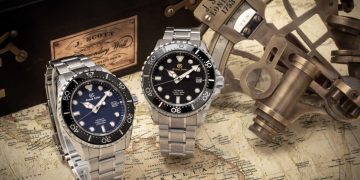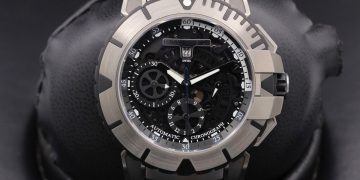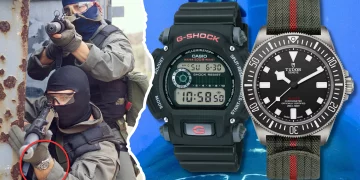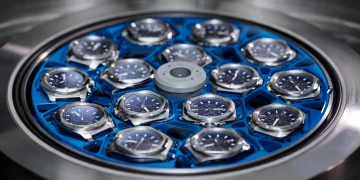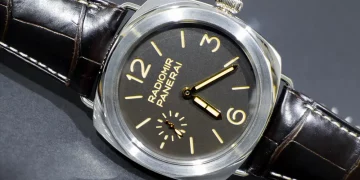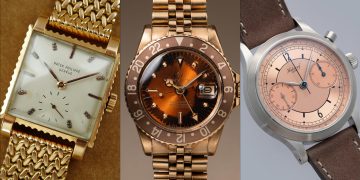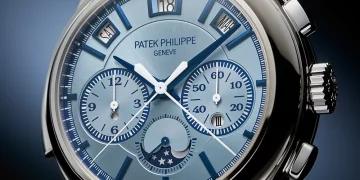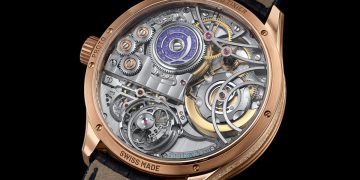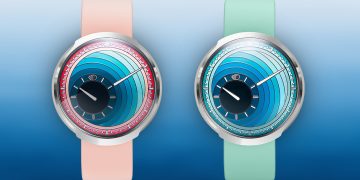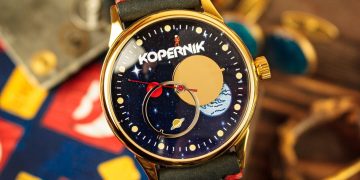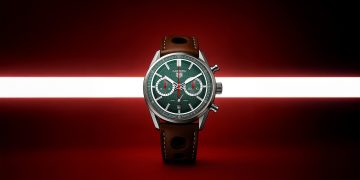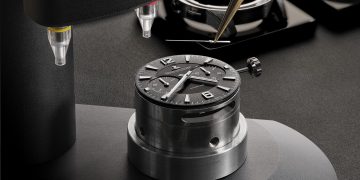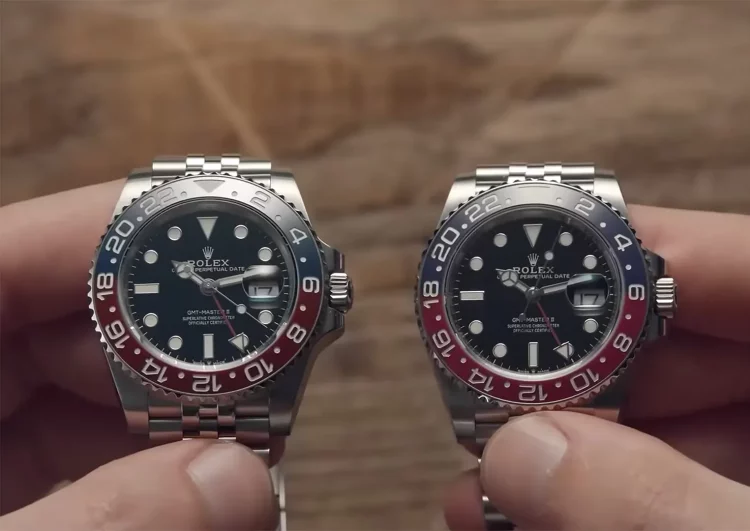In the world of luxury timepieces, authenticity is paramount. Whether you’re a seasoned collector or a casual enthusiast, owning a genuine luxury watch is often seen as a symbol of success, taste, and sophistication. But as the market for high-end watches continues to grow, so too does the presence of counterfeit versions, some of which are incredibly convincing. These fakes are so well-made that even experts have been known to be fooled. One such fake was a $20 replica that fooled a group of seasoned watch experts, sparking discussions about the intricacies of watch authentication.
In this article, we will explore the fascinating world of counterfeit watches, compare a hyper-realistic fake to its genuine counterpart, and teach you key tricks to spot the differences. By the end, you will be better equipped to identify fakes and protect yourself from falling victim to fraudulent watch sales.
The Rise of the Fake Watch Industry: Why Counterfeits Are Becoming Harder to Spot
The global luxury watch market has experienced exponential growth over the past few decades. As more people seek to own a piece of horological history, the demand for high-end watches has surged. This rise in demand has, unfortunately, led to an increase in counterfeit watches, some of which are so realistic that they defy detection by the untrained eye. The counterfeit watch industry has become a multi-billion-dollar business, and some replicas are crafted with such precision and attention to detail that even experts struggle to distinguish them from the real thing.
Advances in technology, such as 3D printing and CNC machining, have made it easier for counterfeiters to replicate the smallest details of a luxury watch. From the weight of the watch to the movement inside the case, modern fakes can mimic almost every aspect of the original. While most counterfeit watches are made from cheaper materials and lack the true craftsmanship of genuine timepieces, many of these replicas can still fool even experienced collectors and industry professionals.
The $20 Fake Watch That Fooled Experts: A Case Study
Let’s dive into a case study involving a counterfeit watch that was able to deceive even experienced experts. This particular fake, which was priced at just $20, closely resembled a high-end luxury watch that typically retails for thousands of dollars. The fake was so well-crafted that when it was presented to a group of watchmakers and experts, none of them were able to identify it as a counterfeit at first glance. The watch looked, felt, and even ticked like the real thing.
At first, the weight of the watch seemed identical to the genuine model. The dial, which featured intricate markings and subtle texturing, was flawless. The case was made of stainless steel with the exact finish that you would expect from a luxury timepiece. Even the bracelet, often a giveaway in cheaper fakes, was crafted to perfection, mimicking the high-quality materials used in the original.
When experts began inspecting the watch more closely, they still struggled to detect the counterfeit nature of the piece. The font on the dial was slightly off, but only a discerning eye would be able to notice. The crystal, which appeared to be sapphire, was actually a synthetic material with similar optical properties but a lower scratch resistance. The most striking aspect of the counterfeit watch was its movement. Inside the case, the replica featured a low-quality movement that lacked the fine finishing and mechanical precision of the genuine model.
Despite these subtle flaws, the fake watch was convincing enough to deceive even experienced professionals. This case serves as a reminder of how sophisticated counterfeit watches have become, and it underscores the importance of knowing how to authenticate a timepiece.
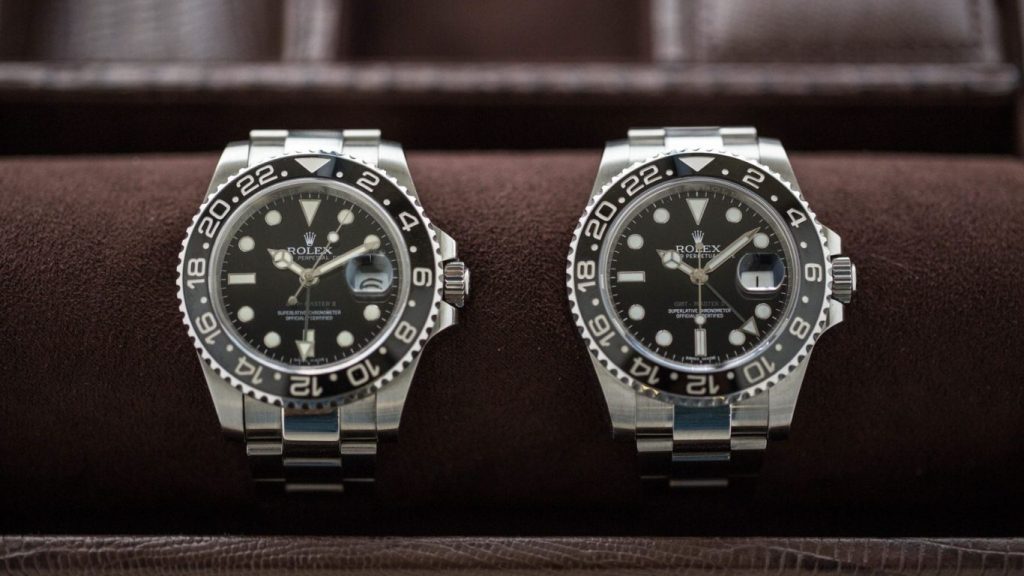
Key Authentication Tricks: How to Spot a Fake Watch
While counterfeits are becoming more sophisticated, there are still key techniques and details that can help you distinguish a fake watch from a genuine one. By learning to spot these subtle differences, you can protect yourself from buying a counterfeit timepiece.
1. The Weight Test: Does It Feel Right?
One of the most reliable ways to identify a counterfeit watch is by assessing its weight. Genuine luxury watches are built with high-quality materials, such as stainless steel, gold, and titanium, which give them a significant weight. Counterfeit watches, on the other hand, often use cheaper materials, such as alloy metals, which are much lighter.
When you pick up a watch, pay attention to its heft. Does it feel solid and substantial, or does it feel light and flimsy? While not foolproof, this can be one of the first indicators that the watch might be a fake. Of course, some counterfeiters are now using high-quality materials to create heavier fakes, so the weight test should always be paired with other authentication methods.
2. Examine the Dial: Fonts, Markings, and Details
The dial is one of the most important features to scrutinize when determining whether a watch is real or fake. Fake watches often have subtle but noticeable differences in the text, font, and overall layout of the dial. For example, the font used on the dial of a counterfeit watch may be slightly off from the original—either too bold, too thin, or incorrectly spaced.
Check for any signs of misalignment in the text, logos, or markers on the dial. Pay close attention to the minute markers, which are often the first to be misaligned in a fake. Look at the edges of the dial and the finishing of the hands. On genuine watches, the hands are typically well-finished with sharp edges, while on counterfeits, they might appear rounded or uneven.
3. Inspect the Crystal: Look for Small Imperfections
Luxury watches are typically fitted with sapphire crystal, which is known for its durability and scratch resistance. A genuine sapphire crystal will have a slightly blue or green tint when viewed from an angle. Counterfeit watches often use lower-quality crystals, such as mineral glass or acrylic, which can appear slightly cloudy or prone to scratches.
To test whether the crystal is genuine, you can gently rub it with a microfiber cloth to see if it attracts any scratches. While this test can damage the surface of the watch, it can be a useful way to identify a fake if done carefully.
4. Movement: Listen for the Tick
The movement inside a watch is often one of the hardest things to replicate in a counterfeit timepiece. Genuine luxury watches, especially mechanical and automatic models, feature movements that are finely tuned for precision and smoothness. When you wind a genuine watch, the second hand will sweep smoothly around the dial with no noticeable jump.
On the other hand, most fake watches use low-quality movements that produce a distinct ticking sound or cause the second hand to “tick” in noticeable intervals. If you can hear a loud ticking noise or if the second hand moves in discrete steps instead of sweeping smoothly, it’s likely a sign of a counterfeit watch.
5. Check the Serial Number and Documentation
Every genuine luxury watch has a unique serial number engraved on the case or bracelet. This number can be cross-referenced with the manufacturer to verify the authenticity of the watch. Counterfeiters often overlook the importance of the serial number, or they produce fake numbers that are incorrect or poorly executed.
Check the watch’s paperwork and any warranty cards that come with it. Genuine luxury watches come with detailed certificates of authenticity and warranty information. If the watch lacks this documentation or if the serial number is missing or poorly engraved, it’s a major red flag.
6. The Date Wheel: A Subtle Indicator
For watches that feature a date complication, the date wheel can be a valuable tool in identifying a fake. On a genuine luxury watch, the date change occurs smoothly and precisely at midnight, with no jerky or uneven movement. In contrast, counterfeits often have poorly aligned date wheels that can change the date gradually over several hours, rather than precisely at midnight.
Look closely at the date display. Does the font match the one used on the genuine model? Is the alignment correct? Pay special attention to any discoloration around the edges of the date window, as counterfeit watches often have poorly printed date wheels.
Conclusion: The Importance of Knowledge in Avoiding Fakes
Counterfeit watches are becoming increasingly sophisticated, and it’s more important than ever to be able to spot the differences between a genuine timepiece and a fake. By paying attention to details such as the weight, the dial, the movement, and the serial number, you can reduce the chances of falling victim to a counterfeit watch.
The $20 fake watch that fooled experts serves as a cautionary tale for watch enthusiasts everywhere. While it may seem like an impossible task to spot a fake, with the right knowledge and attention to detail, you can protect yourself from being deceived. Whether you’re buying a luxury watch for yourself or considering a second-hand model, always make sure to do your due diligence and educate yourself on the key features that make a watch authentic.


